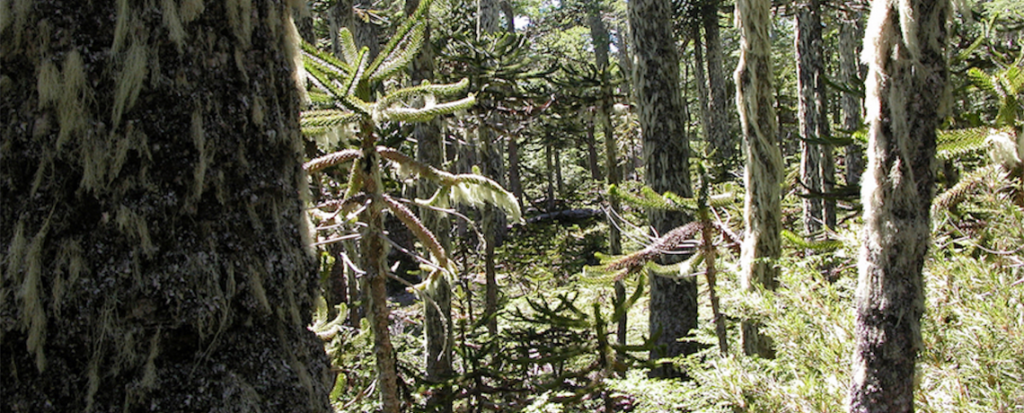Ancient Araucaria forest in Chile. Photo: Petermann, 2004
The Guardian December 25, 2019
Bibi van der Zee
A few years ago I went to the Kilombero valley in Tanzania to find out why the elephants there had disappeared. It was still beautiful; a long, green plain with red earth, lined by mountains on either side. But, as recently as the 1990s, people kept telling me, it had been a wildlife paradise. One man remembered sitting in the mountains at sunset, watching the elephants cross the valley through the miombo forest, while the lions roared.
On one road there was a teak plantation on one side and a miombo forest on the other. The plantation was quiet, symmetrical, empty: there was no undergrowth because teak leaves kill whatever they fall on. The miombo forest was more familiar to anyone who loves to be out in the woods: the smell of earth, rotting leaves, the hum of bees, dove calls, an abundance of complexity and energy.
The valley is now a patchwork of teak plantations, rice and sugar fields and huge herds of cattle, so the lions and elephants have all but vanished. The most telling remains we saw were the burned stumps, like stripped bones, of the forest.
The same thing is happening everywhere. On the one hand, huge amounts of energy are going into reforesting the world. The amount of tree cover is actually rising. The 2011 Bonn challenge aims to bring 350m hectares (864.5m acres) of degraded land into restoration by 2030, and countries have already signed up 170m hectares. A impressive number of sometimes surprising countries have increased their forest cover by more than 20% over the last 25 years: China, Belarus, Chile, France, Greece, India, Iran, Morocco, the Philippines, Spain, Thailand and Turkey. It can really, at moments, seem like some kind of success story.
But the ancient forests, the original, complex, messy forests, continue to disappear, and some of the most enthusiastic signatories to the Bonn challenge have seen some of the worst losses. Argentina, for example, has committed to planting 1m hectares, but meanwhile the ancient Gran Chaco in the north continues to vanish, replaced by huge fields of soy to feed the farm animals of the world.
To read more visit The Guardian

